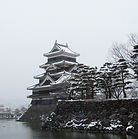
Background image: The interior of the 98,787-seat Camp Nou ("New Field") stadium, home of FC Barcelona -- one of the city's premier professional soccer (football) clubs -- where I covered the United States-Italy soccer match on the opening competition day of the 1992 Barcelona Summer Olympics.
Sports Writing Archive
I was a newspaper reporter for the first 27 years of my career, most of it as a sports writer, and for the last 15 years I was with the San Jose Mercury News. While some of that work involved covering local college and professional teams, which allowed me to cover Stanley Cup playoffs, World Series and Super Bowls, the stories I enjoyed working on most involved investigative pieces, the social and political issues of the emergence of women's sports, and the Olympic Games.
This archive is a collection of some of my favorite work for the Merc as well as the stories behind those stories -- why and how they were reported and written, and what I did to get them.
To read any of these stories from the collections below in full, click on the boldface yellow headline on the right side of the page and you'll get a PDF version of the full text but none of the pictures that accompanied them in the newspaper.
My writing opportunities were limited at my first Olympics because I was assigned to Calgary as an editor in Knight-Ridder Newspapers bureau. Consequently, my credential did not allow access to most of the competition venues, and getting a story out on my own time became a daily struggle.
Before each Olympics, there are always a few stories likely to become the focus for U.S. readers and thus shape your coverage plans. When you write for the hometown paper of the figure skater at the center of the story the country is most interested in -- Kristi Yamaguchi -- you can't get beat by any reporter on any development. Not a sniffle, not a sneeze can go unreported.
By my third Winter Olympics I had learned that host towns often fail to live up to the winter wonderland image you get from TV coverage. There are plenty of places where there is no snow. It rained on speedskating in Albertville and was 70 degrees in downtown Calgary the last few days of the Olympics there. But Lillehammer was the place that Disney artists drew in "Frozen."
Something in the way the burly Tokyo dock worker at the bar beside me grabbed the giant squirming prawn from the bowl, snapped off its head, peeled the shell off in one practiced motion and popped it in his mouth told me I wasn't in Kansas any more. It wasn't even the same day as Kansas. Or California. Japan was discombobulating from the get-go.
A month before I arrived in January, the Soviet Union ceased to exist, breaking up into Russia and 14 other former republics that now were independent countries. With only a couple of weeks left before the opening of the 1992 Winter Olympics, the question I was sent to Moscow to investigate was what would happen to the world's most successful Olympic sports team.
The lesson I learned in Barcelona, the first Summer Olympics I covered, was that as big an undertaking as the Winter Games are, they are still dwarfed by those in warm weather. Three times as many events, three times as many athletes, three times as many places that you need to be simultaneously to cover what's important.
Atlanta felt too close to home to be an exotic Olympic locale. It wasn't just that I spoke the local tongue. The county fair downtown, silver Chevy pickups in the opening ceremonies and the angry white man murder at the Olympic Park that powerfully reinforced to visitors from abroad that Atlanta was everything they'd thought.
No team I've ever covered played under as much pressure from such high expectations and lived up to them so well as the U.S. Women's National Soccer Team in the 1999 Women’s World Cup.
It was prepared not only for the competition it faced over three hot
weeks in July but for the public attention that only its players expected.








